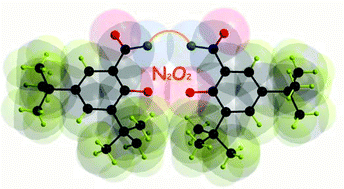New anionic cobalt complexes using highly hindered bis-amides with varying donor abilities as ligands†
Abstract
Four potential tetradentate

Maintenance work is planned for Wednesday 1st May 2024 from 9:00am to 11:00am (BST).
During this time, the performance of our website may be affected - searches may run slowly and some pages may be temporarily unavailable. If this happens, please try refreshing your web browser or try waiting two to three minutes before trying again.
We apologise for any inconvenience this might cause and thank you for your patience.
* Corresponding authors
a
Dpto. Química Orgánica, Facultad de Ciencias Químicas, Universidad de Concepción, Casilla 160-C, Concepción, Chile
E-mail:
cjimenez@udec.cl
Fax: +56 41 245974
Tel: +56 41 204158
b Laboratorio de Rayos X y Materiales Moleculares, Dpto. de Física Fundamental II, Facultad de Física, Universidad de La Laguna, Avda. Astrofísico Francisco Sánchez s/n, 38204-La Laguna, Tenerife, Spain
c Centro de Productos Naturales Orgánicos “Antonio González, “Instituto Universitario de Bio-Orgánica, Universidad de La Laguna, Astrofísico Francisco Sánchez No. 2, La Laguna, Tenerife, Spain
d Sciences Chimiques de Rennes, UMR-CNRS 6226, Université de Rennes-1, 35042 Rennes, France
e Departament de Química Inorgànica/Instituto de Ciencia Molecular, Facultat de Química, Universitat de València, Avda. Dr. Moliner 50, 46100 Burjassot, València, Spain
Four potential tetradentate

 Please wait while we load your content...
Something went wrong. Try again?
Please wait while we load your content...
Something went wrong. Try again?
C. A. Jiménez, J. B. Belmar, J. Alderete, F. S. Delgado, M. López-Rodríguez, O. Peña, M. Julve and C. Ruiz-Perez, Dalton Trans., 2007, 2135 DOI: 10.1039/B617604F
To request permission to reproduce material from this article, please go to the Copyright Clearance Center request page.
If you are an author contributing to an RSC publication, you do not need to request permission provided correct acknowledgement is given.
If you are the author of this article, you do not need to request permission to reproduce figures and diagrams provided correct acknowledgement is given. If you want to reproduce the whole article in a third-party publication (excluding your thesis/dissertation for which permission is not required) please go to the Copyright Clearance Center request page.
Read more about how to correctly acknowledge RSC content.
 Fetching data from CrossRef.
Fetching data from CrossRef.
This may take some time to load.
Loading related content
